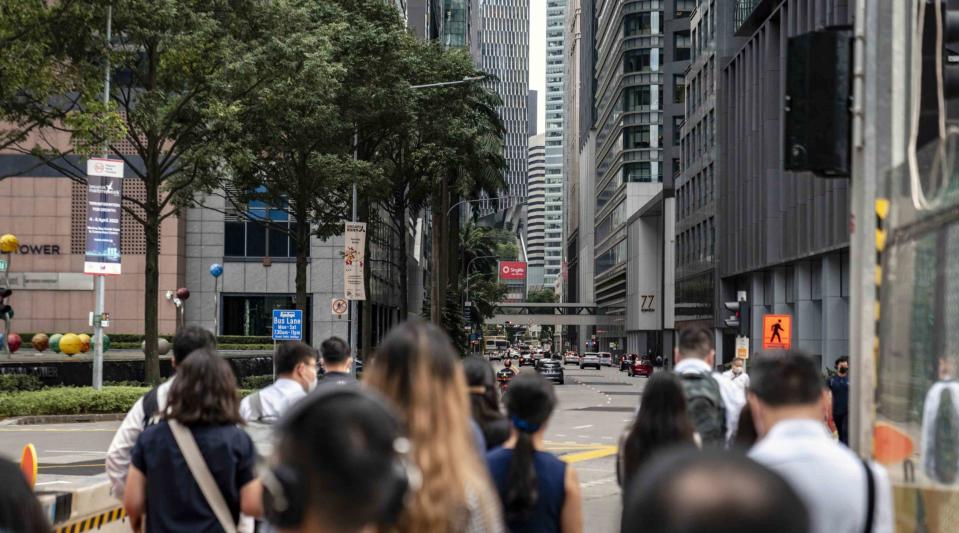Supply of green skills in Singapore growing faster than demand, bucking global trend: LinkedIn

As of February, 12.6% of all LinkedIn members in Singapore can be considered “green talent”, a 14% y-o-y increase.
The supply of green skills in Singapore has grown faster than demand, but this is lumpy across sectors, says LinkedIn data released this week.
As of February, 12.6% of all LinkedIn members in Singapore can be considered “green talent”, a 14% y-o-y increase. However, paid job listings that required green skills only increased 1% y-o-y to 18.7% of all local listings on LinkedIn.
This bucks the global trend, where demand for green skills is outstripping supply, according to LinkedIn platform data from February 2022 to February this year.
LinkedIn published its “Global Green Skills Report 2022” in February 2022, but has not followed up with an edition this year.
According to LinkedIn, the five most common green skills in Singapore are labelled: sustainability reporting, corporate sustainability, energy efficiency, renewable energy and sustainability.
In Singapore, the share of green talent grew the most y-o-y within the education, financial services and consumer services industries.
However, the total share of green talent in these industries remains “relatively low” at 13.4% in education, 12.9% in consumer services and 7.46% in financial services. According to LinkedIn, these industries are expected to sustain their growth in green talent.
“This trend presents an opportunity for business leaders to actively participate and drive the green transformation efforts,” adds the employment-focused social media platform. “Companies can look to incorporate green skills into existing jobs that are not traditionally green in nature.”
Singapore’s financial services sector is undergoing rapid green transformation and is pulling ahead of global peers, says LinkedIn. “The industry has a higher penetration of green skills compared to the global average, at close to five times [higher]. As a major global financial hub, Singapore has an opportunity to lead the green transformation in this sector.”
Meanwhile, the manufacturing industry has room for improvement when it comes to adopting green skills, says LinkedIn. Singapore’s manufacturing industry has a lower penetration of green skills compared to the global average, at just 0.23 times.
Adopting green skills will contribute to the progress of Singapore’s Manufacturing 2030 vision — to become a global business, innovation and talent hub for advanced manufacturing, says LinkedIn. “This is especially given that the manufacturing sector has a significant impact on the environment through resource depletion, pollution and waste generation.”
Some sectors here show both a low percentage of green talent and “negligible” y-o-y growth. These sectors, including accommodation, food services and retail, are possibly lagging in their green transformations, says LinkedIn. “Herein lies an opportunity for business leaders and governments to step up and stimulate further progress in green transformation.”
Singapore's retail industry has a significantly higher penetration of green skills compared to the global average, at 8.89 times higher; while the manufacturing industry exhibits a lower penetration of green skills, at 0.23 times the global average.
Global data
LinkedIn examined 48 countries in its study. “In every country we examined, just one in five workers have green skills.”
Between 2022 and 2023, the typical country saw a 12% increase in the concentration of green talent among its workforce. Likewise, the share of job postings requiring green skills had a median growth rate of 23.9% in the 48 countries.
Three of the 10 fastest-growing titles since 2019 globally involve sustainability: sustainability analyst, sustainability manager and sustainability specialist.
According to LinkedIn, workers with green skills are hired for new jobs at a higher rate than those without green skills. “In fact, the LinkedIn Hiring Rate (LHR) for workers with green skills exceeded the national LHR in all the countries in our study, and that has been the case with near perfect consistency since March 2020.”
See Also:
Click here to stay updated with the Latest Business & Investment News in Singapore
How Johnson Controls redefines the blueprint for building design with Pure Storage
If we are not green with envy, we can navigate the hot summer nights
Get in-depth insights from our expert contributors, and dive into financial and economic trends

 Yahoo Finance
Yahoo Finance 